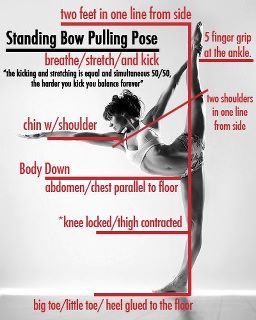 Someone sent me this picture minutes after I put up yesterday’s post on hyperextension of the knee. Then I used the google machine to try and get at the logic behind Bikram yoga’s insistence on locking the knees during the yoga practice.
Someone sent me this picture minutes after I put up yesterday’s post on hyperextension of the knee. Then I used the google machine to try and get at the logic behind Bikram yoga’s insistence on locking the knees during the yoga practice.
Addressing the picture above, everything looks fine with the exception of the standing leg. As always, I may be wrong but there seems no real argument for hyperextension of the knee. The bikram argument seems to be that locking the knee allows for a greater access to, or engagement of, the quadriceps muscle. This makes very little sense to me. They make a distinction that I don’t understand between locked, and locked straight. I am going to assume that the “locked” knee in the picture above is what is considered correct.
The quadriceps muscle is an extensor of the knee. Of the four muscles that make up the quadriceps, only one (rectus femoris) acts as a flexor of the hip. The main function of the whole quadriceps is as an extensor of the knee joint. To me, as soon as the knee capsule hyperextends, the quadriceps stops working as an extensor, and its relationship to the hamstring, its opposing muscle, is thrown out of balance.
When standing on one leg the alignment of the shin and foot is paramount to success. If the shin bone is at a right angle to the floor, the foot can be planted across all four corners of the foot. If the shin bone moves behind the ankle joint into hyperextension of the knee the weight of the body is pulled onto the outer foot and the peroneal muscles which are key to a grounded foot can’t help the standing leg stabilize. Instead, the legs find stability through the ligaments at the back of the knee instead of well aligned bones.
I can only refer to my own experience with hyperextension of the knee. I have been doing it my whole life and I feel that it was my excessive use of hyperextension that led to my knee troubles. When I began my yoga practice I had no strength in my quadriceps. After my first knee surgery I had my only experience with weight lifting—I used a leg press machine to build the quadriceps muscles and have never looked back. After that I began to learn to use the quadriceps successfully in my yoga practice. And the learning involved using the thigh muscles when the leg was straight, as opposed to vainly trying to engage them when the knee was locked.
My main schtick is that I am a guide. I don’t fix people; I help people fix themselves. So don’t believe me because I could be wrong and even if I am right it won’t help you to know something that you don’t experience for yourself.
Here are two ways to feel an engagement of the quadriceps. You decide which is better.
To be clear, not everyone can find a hyperextension the knee and this series of movements will give you some info on what you do.
- Sit on the floor with your legs straight out in front of you. You can lean backwards if you’d like with one hand resting on the floor behind you and the other on one of your thighs.
- Try to lift your heels up off of the floor. If you can do that, you can hyperextend your knees and you should never do it again (good luck!).
- If you can lift the heels— that is hyperextending the knees. Feel the kind of engagement you get from the quadriceps muscle. It will engage but try to feel the quality of engagement.
- Now keep your heels down and engage your quadriceps again. Feel what this engagement is like.
These two actions should have very different feelings. I think that the engagement of the quadriceps when the heels are down is far more integrated and effective tone of the muscle.
Be your own teacher is one of my many mantras. Don’t listen to the teachers you have would be another.
***
